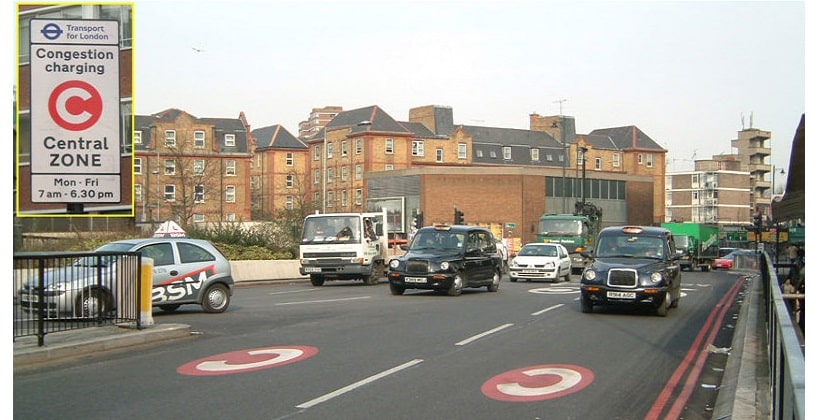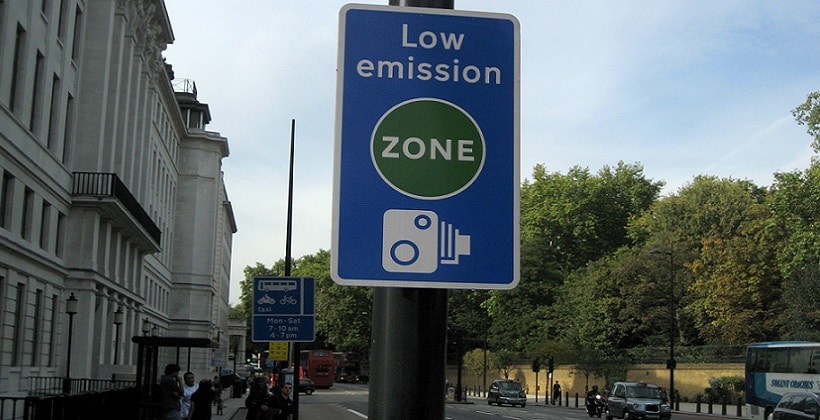Parking management –
- Reduce the demand for parking, mainly by charging more for on-street parking spaces or applying dynamic pricing.
- Rotate the number of cars using parking spots by imposing a time limit on parking.
- Reforming parking policies (e.g., changing minimum to maximum requirements in zoning codes or unbundling parking costs from rents).
Congestion charging – Tax vehicles that enter a delimited urban area, usually the city center, to encourage drivers to avoid these areas or switch to alternate forms of transportation.
License plate restrictions – Restrict some vehicles from transiting through certain areas of the city on specific days and/or times based on the number of their license plates (e.g., ending in an odd or even number).
Low-emission zones – Prohibit or limit vehicles with a certain level of emissions from designated areas. Usually the policy starts by focusing on the most polluting vehicles and gradually becoming more restrictive.
Trip Reduction Ordinances – Require organizations in the city to develop and implement strategies to change commuting habits.



